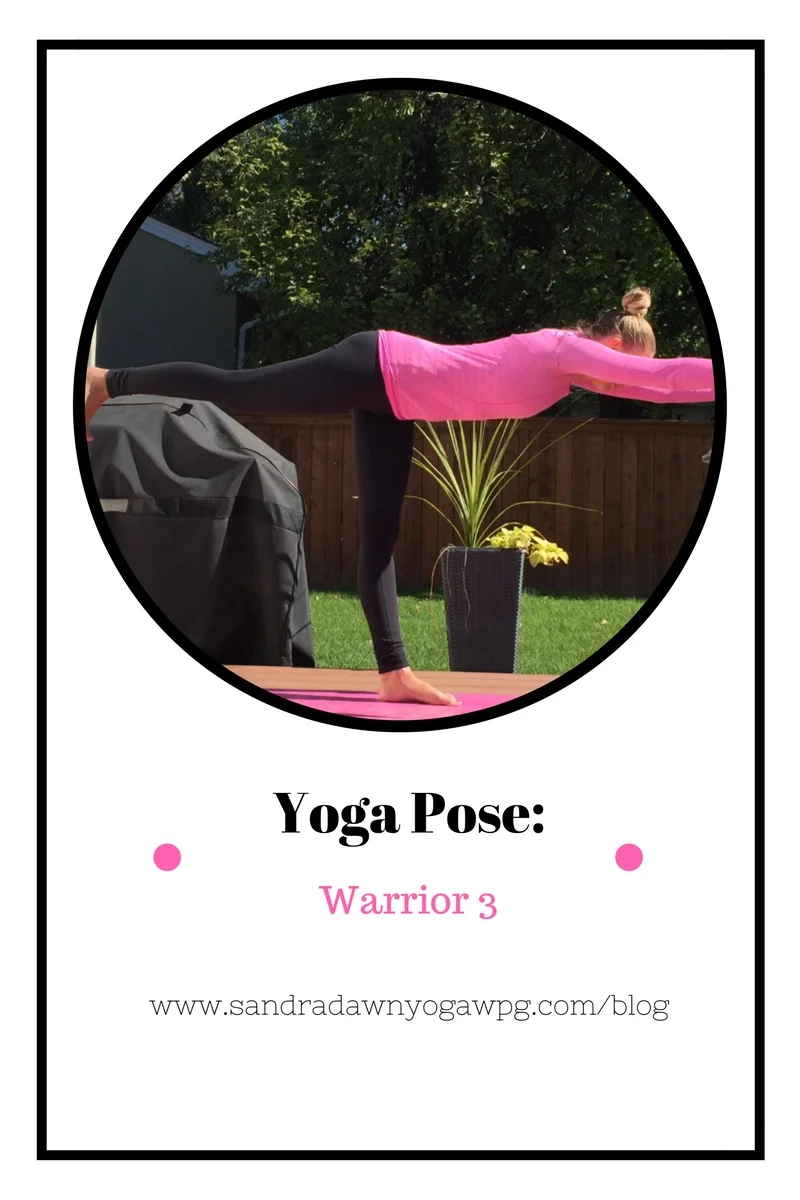So, now you know what Pranayama is and how it can benefit your life and Yoga practice, I wanted to give you two of my favorite breathing techniques that can act as your first steps into the world of Pranayama. The first technique - Ujjayi Breath - is a wonderful breath to bring into your asana practice. I find it really helpful to use this breath to help keep me centered and present during my yoga practice, especially during longer holds. The second technique is one that you can practice on it's own during your day, or at the end of your yoga practice before you lay in savasana. Keep reading to learn how to practice these techniques!
Yoga Pose: Warrior 3
Warrior 3 - Virabhadrasana 3 - is perhaps the most challenging of all the Warriors as it requires strength, balance and flexibility. This pose provides many benefits to it's practitioner, including strengthening the legs, feet and ankles, strengthening the core muscles, opening and toning the shoulder muscles, and helping to improve balance. Keep reading to learn how to move into this pose. Since balancing in this pose can be especially difficult for beginners, I have also included the supported version of this pose as well. Enjoy!
How to use a Hoberman Sphere to Teach Children to Breathe Deeply
It can be difficult to slow a child down long enough to have them focus on anything, let alone their breathing! As much as children know, and have been taught, that taking "deep breaths" can help their little bodies and minds calm and slow down, it may be difficult for some children to actually access deep breathing for a variety of reasons. They may just be busy being kiddos and running around from here to there, not taking pause enough to, in fact, pay attention to their breath.
Yoga Pose: Extended Side Angle - Four Ways!
Extended Side Angle - Parsvakonasana - is one of my favorite poses to do. It has plenty of benefits, including strengthening and stretching the legs, hips, feet and ankles, all while opening the shoulders and chest. This pose can be quite challenging, especially for beginners, so I have provided four variations for you to try depending on your limitations and where you are at in your Yoga practice! Keep reading to learn the steps to move in to this beautiful pose.
Yoga Pose: Warrior 1 Video Tutorial
Warrior 1 - Virabhadrasana 1 - is a challenging and beautiful pose. It has many benefits as it opens the hips and shoulders while strengthening and stretching the legs. Overall, this pose tends to make me feel powerful - like a warrior! Keep reading to find out how to move in and out of this pose and make sure to watch the video at the end for some visual cues!
Difficulty Level: Beginner - Intermediate
Step 1: Begin standing in tadasana at the front of your mat. Ground into the feet and legs so you feel solid and sturdy on the mat. With an exhale take a large step back - at least 3-4 feet - with one foot.
Step 2: Ensure your back foot is angled in approximately 30-45 degrees, so the toes are moving toward the front of the mat. Make sure to keep your back heel pressing into the mat.
Step 3: Move your hips so that both hip bones are working at facing forward. They might not get totally square to the front of the mat (that is ok!!!) but they are moving in that direction. The ribcage is also open to the front of the mat.
Step 4: Engage the core muscles and think about lifting the front of the body up, keeping the ribcage from flailing out. Also, think about lengthening down the back body and tail-bone.
Step 5: With an inhale, bring your arms up, overhead, with your palms facing one another. Stretch through the fingertips so the arms stay strong. Even as the arms reach up, keep the shoulders down away from the ears.
Step 6: With an exhale, bend deeply into the front knee, moving forward through the shin bone. Make sure the knee does not bend past the ankle as they should be lined up. If the knee is coming past the ankle, maybe try a wider stance.
Step 7: Breathe and feel.
Shoulder blades glide down the back body.
Chest lifts up.
Shift the gaze up to the finger tips.
Press into the baby toe side of the back foot.
Step 8: To come out, first release the arms and then step your back foot forward, bringing yourself back to tadasana. Try the pose again on the other side!
Watch the video below for more helpful tips!



